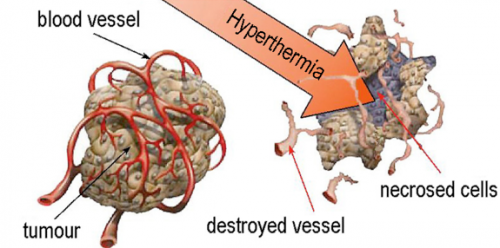Hyperthermia – An Overview
The use of high temperature heat in a therapeutic setting or simply “hyper-thermia” is an emerging treatment tool in the field of cancer (i.e. a field known as thermal medicine). It has been shown that cancer cells (i.e. both leukemia & solid tumors) are more sensitive to hyperthermia than normal tissue cells. “Heat and cancer do not get along”. This has given researchers greater hope of using medically supervised high temperature heating as a treatment tool against cancer.
Several research centers & hospitals throughout Europe, Asia, and the United States are actively studying the application of hyperthermia on weakening and even killing cancer cells within the body. In addition, this same research is also showing how hyperthermia can be combined together with radiation, chemotherapy, and immunotherapy medicines so that their positive effects can be enhanced in the killing of cancer cells.
In basic terms you are “boosting” the benefits of chemotherapy, radiotherapy, and immunotherapy or immune-based treatments with heat (i.e. thermo-immunotherapy). For patients whose cancers have become more resistant to chemotherapy including for re-irradiated areas, hyperthermia is also showing promise in making those situations work better as well.
There is also a growing interest in the use of some hyperthermia applications (i.e. whole body) in the treatment of chronic and complex diseases (i.e. Lymes Disease)
We have clinically seen patients given the same chemotherapy agents they are resistant too (and at lower doses on top) work once again when heat into the mix! Several research papers have also supported this trend in oncology.
